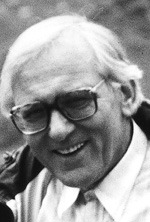
Kurt Rommel (*1926)
Kurt Rommel (*1926) HPD nº 130 e 284 Nasceu 20 de dezembro de 1926 em Kirchheim/Teck, Alemanha Serviu inicialmente como pastor da Igreja Evangélica de Württemberg na paróquia em Friedrichshafen/
Clique em “Ver mais” para ter a visão geral ou acesse diretamente os conteúdos através dos links abaixo.
Ver maisConheça as ênfases e atividades realizadas na Igreja Evangélica de Confissão Luterana no Brasil (IECLB).
Ver maisTenha acesso a conteúdos por temas e âmbitos de trabalho da Igreja Evangélica de Confissão Luterana no Brasil (IECLB).
Ver maisAcesse serviços e documentos da Igreja Evangélica de Confissão Luterana no Brasil (IECLB).
Ver maisConfira os eventos e os cursos oferecidos pela Igreja Evangélica de Confissão Luterana no Brasil (IECLB).
Ver maisFortaleça a fé com as Senhas Diárias, as Meditações Diárias e o Culto Nacional Online.
Ver maisFique por dentro do que acontece na Igreja Evangélica de Confissão Luterana no Brasil (IECLB).
Ver mais
Kurt Rommel (*1926) HPD nº 130 e 284 Nasceu 20 de dezembro de 1926 em Kirchheim/Teck, Alemanha Serviu inicialmente como pastor da Igreja Evangélica de Württemberg na paróquia em Friedrichshafen/

FRANZ JOSEPH MOHR (1792-1848 ) HPD nº 13 Nasceu: 11 de dezembro de 1792, em Salzburg, Áustria. Faleceu: 5 de dezembro de 1848, Wagrain, (Pongau), Áustria. Sepultado: Wagrain, Áustria. É
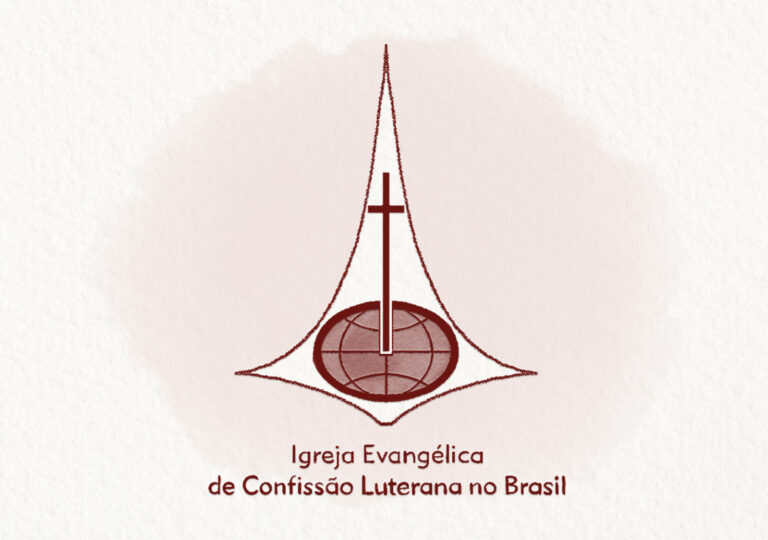
Kaspar Neumann (1648-1715) HPD nº 129 Kaspar Neumann, teólogo e pregador evangélico, autor de muitos hinos. Nasceu: 14 de setembro de 1648 em Breslau, Baixa Silésia faleceu: 27 de janeiro
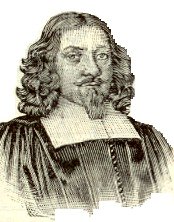
Johann Olearius (1611-1684) HPD nº 87, 110, 121 Johannes G. Olearius (1611-1684) Nasceu: 17 de setembro de 1611 em Halle, Alemanha Faleceu: 24 de abril de 1684 em Weissenfels, Alemanha.
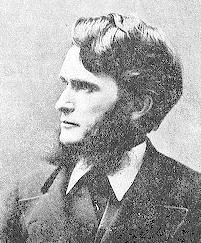
Jeremiah Eames Rankin (1828-1904) HPD nº 118 Nasceu: 2 de janeiro de 1828, Thornton, New Hampshire, USA Faleceu: 28 de novembro de 1904, Cleveland, Ohio, USA Sepultado: Cemitério Lake View,
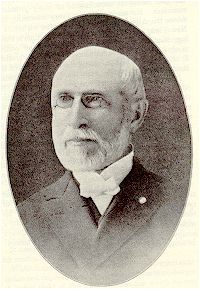
George Frederick Root (1820-1895) – HPD nº 164 Nasceu: 30 de agosto de 1820, Sheffield, Massachusetts, USA Faleceu: 6 de agosto de 1895, Ilha Bai¬ley Isl¬and, Maine. Sepultado: North Read¬ing,

Moller, Martin (1547-1606) HPD nº 149 Nasceu: 9 de novembro de 1547 em Kropstädt, próximo de Wittenberg, Alemanha. Faleceu (cego): 02 de março de 1606 em Görlitz, Saxônia, Alemanha. Sepultado
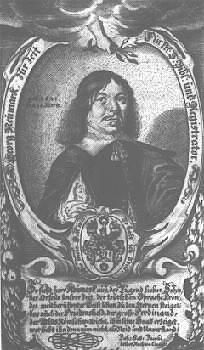
Georg Neumark (1621-1681) HPD nº 214 (e HPD 157) Nasceu: 16 de março de 1621, em Langensalza, Thuringia. Faleceu: 18 de julho de 1681, em Weimar, Alemanha Neumark foi educado

Luise Henriette von Oranien (1627-1667) – HPD 298 Nasceu em 27 de novembro de 1627, em ‘S Gravenhage (O Hague), Paises Baixos Faleceu aos 18 de Junho de 1667, no
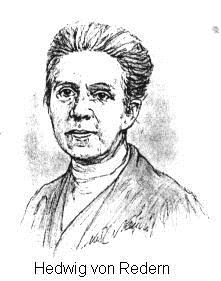
Hedwig von Redern (1866-1935) HPD nº 169 Nasceu em 23 de abril de 1866 em Berlim, Alemanha Faleceu aos 22 de fevereiro de 1935 em Berlim, Alemanha Após a morte

Johann Andreas Rothe (1688-1758) HPD nº 153 e 296 Nasceu: 12 de maio de 1688, Lissa, Silesia, Alemanha. Faleceu: 6 de julho de 1758, Thommendorf (perto de Bunzlau), Alemanha. Johann

Cláudio Molz (*1945) HPD nº 176 Claúdio Molz, teólogo brasileiro, pastor da IECLB e tradutor. Nasceu: 27 de agosto de 1945, em Rio Pequeno, Mun. de Sinimbu (RS) Após o
Todas as notícias
Portal Luterano
We firmly believe that the internet should be available and accessible to anyone, and are committed to providing a website that is accessible to the widest possible audience, regardless of circumstance and ability.
To fulfill this, we aim to adhere as strictly as possible to the World Wide Web Consortium’s (W3C) Web Content Accessibility Guidelines 2.1 (WCAG 2.1) at the AA level. These guidelines explain how to make web content accessible to people with a wide array of disabilities. Complying with those guidelines helps us ensure that the website is accessible to all people: blind people, people with motor impairments, visual impairment, cognitive disabilities, and more.
This website utilizes various technologies that are meant to make it as accessible as possible at all times. We utilize an accessibility interface that allows persons with specific disabilities to adjust the website’s UI (user interface) and design it to their personal needs.
Additionally, the website utilizes an AI-based application that runs in the background and optimizes its accessibility level constantly. This application remediates the website’s HTML, adapts Its functionality and behavior for screen-readers used by the blind users, and for keyboard functions used by individuals with motor impairments.
If you’ve found a malfunction or have ideas for improvement, we’ll be happy to hear from you. You can reach out to the website’s operators by using the following email
Our website implements the ARIA attributes (Accessible Rich Internet Applications) technique, alongside various different behavioral changes, to ensure blind users visiting with screen-readers are able to read, comprehend, and enjoy the website’s functions. As soon as a user with a screen-reader enters your site, they immediately receive a prompt to enter the Screen-Reader Profile so they can browse and operate your site effectively. Here’s how our website covers some of the most important screen-reader requirements, alongside console screenshots of code examples:
Screen-reader optimization: we run a background process that learns the website’s components from top to bottom, to ensure ongoing compliance even when updating the website. In this process, we provide screen-readers with meaningful data using the ARIA set of attributes. For example, we provide accurate form labels; descriptions for actionable icons (social media icons, search icons, cart icons, etc.); validation guidance for form inputs; element roles such as buttons, menus, modal dialogues (popups), and others. Additionally, the background process scans all the website’s images and provides an accurate and meaningful image-object-recognition-based description as an ALT (alternate text) tag for images that are not described. It will also extract texts that are embedded within the image, using an OCR (optical character recognition) technology. To turn on screen-reader adjustments at any time, users need only to press the Alt+1 keyboard combination. Screen-reader users also get automatic announcements to turn the Screen-reader mode on as soon as they enter the website.
These adjustments are compatible with all popular screen readers, including JAWS and NVDA.
Keyboard navigation optimization: The background process also adjusts the website’s HTML, and adds various behaviors using JavaScript code to make the website operable by the keyboard. This includes the ability to navigate the website using the Tab and Shift+Tab keys, operate dropdowns with the arrow keys, close them with Esc, trigger buttons and links using the Enter key, navigate between radio and checkbox elements using the arrow keys, and fill them in with the Spacebar or Enter key.Additionally, keyboard users will find quick-navigation and content-skip menus, available at any time by clicking Alt+1, or as the first elements of the site while navigating with the keyboard. The background process also handles triggered popups by moving the keyboard focus towards them as soon as they appear, and not allow the focus drift outside it.
Users can also use shortcuts such as “M” (menus), “H” (headings), “F” (forms), “B” (buttons), and “G” (graphics) to jump to specific elements.
We aim to support the widest array of browsers and assistive technologies as possible, so our users can choose the best fitting tools for them, with as few limitations as possible. Therefore, we have worked very hard to be able to support all major systems that comprise over 95% of the user market share including Google Chrome, Mozilla Firefox, Apple Safari, Opera and Microsoft Edge, JAWS and NVDA (screen readers).
Despite our very best efforts to allow anybody to adjust the website to their needs. There may still be pages or sections that are not fully accessible, are in the process of becoming accessible, or are lacking an adequate technological solution to make them accessible. Still, we are continually improving our accessibility, adding, updating and improving its options and features, and developing and adopting new technologies. All this is meant to reach the optimal level of accessibility, following technological advancements. For any assistance, please reach out to

